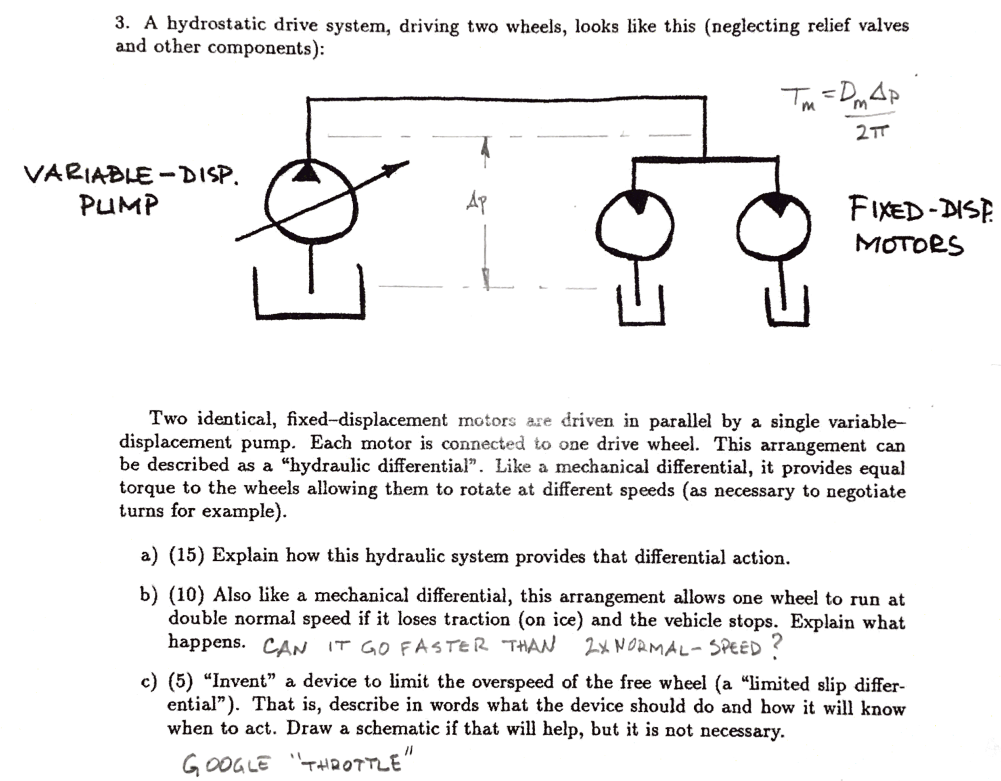(Solved): Hydraulic differential drive (Peterson).Two identical, fixeddisplacement motors are driven in par ...

Hydraulic differential drive (Peterson).
Two identical, fixed—displacement motors are driven in parallel by a single variable-displacement pump. Each motor is connected to one drive wheel. This arrangement can be described as a “hydraulic differential.” Like a mechanical differential, it provides equal torque to the wheels allowing them to rotate at different speeds (as necessary to negotiate turns for example).
a) Explain how this hydraulic system provides that differential action.
b) Also like a mechanical differential, this arrangement allows one wheel to run at double normal speed if it loses traction (on ice) and the vehicle stops. Explain what happens.
c) "Invent" a device to limit the overspeed of the free wheel (a "limited slip differential"). That is, describe in words what the device should do and how it will know when to act. Draw a schematic if that will help, but it is not necessary.